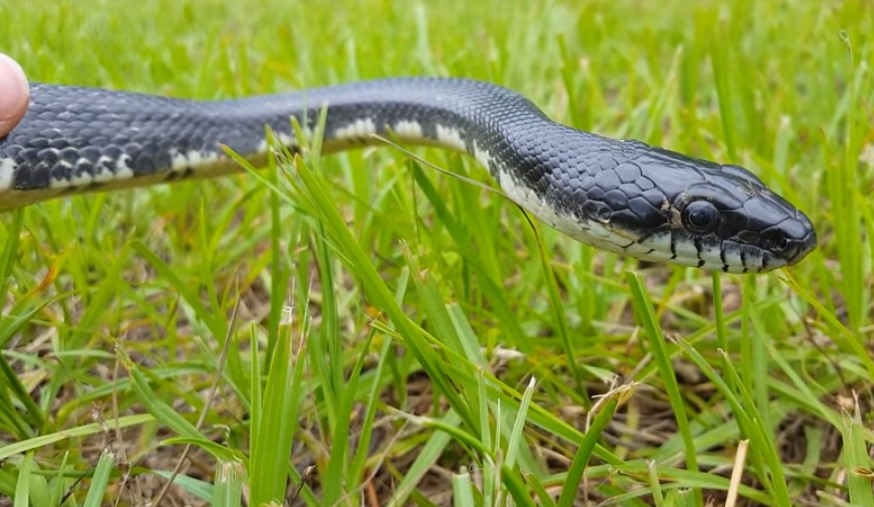
The Black Rat Snake (Pantherophis Obsoletus) is one of the largest snakes in North America, and is to be found across much of the eastern part of the country, and into Canada too. One interesting aspect of the species is that it does hibernate, especially in the populations further north, and they will often share their winter dens with other snakes, including the venomous Copperhead. Although this snake isn't particularly dangerous to humans and isn't venomous, it is a big snake and should be avoided where possible.
Appearance And Diet
When they are fully grown the Black Rat Snake will usually be between seven and eight feet in length, but some of the biggest examples are even larger than this. The adults will have slick black scales that will cover the majority of the body, and will have a white or khaki underbelly. The juveniles will have a pattern on the body, and this will often become evident in the adult after a heavy meal when the skin is stretched. The shape of the body is also quite interesting, with the heavy body not round like many other snakes, but is rather almost square, with curved corners and two flat sides to the body.
The Black Rat Snake is a very successful constrictor and will squeeze the life out of its prey, before consuming it. As the snake's name suggests it can often eat rats and mice, but will actually eat a wide range of other animals. This can include frogs and other lizards, and they will also hunt warm blooded animals such as chipmunks, squirrels and even birds, and are also known to eat eggs.
Behavior And Habitat
These snakes do have some very interesting defense mechanisms, the first of which is to freeze and to bend themselves into a compressed series of kinks. They are quite swift snakes so they can try and flee very quickly, but sometimes they will also whip their tail through dead leaves to try and mimic the sound made by a rattlesnake, which will often work. As with the majority of snakes, they can also expel a foul smelling musk onto the predator when threatened.
Considering that the Black Rat Snake is one of the largest snakes in North America, it is surprising to find out that it is actually an accomplished climber, and can pull itself up a trunk without using branches. It will usually be found in heavily wooded areas where it can have plenty of prey, but may also use open areas within these areas or the edge of the woodland for basking. This large range can often be extended using the snake's ability to swim, although it will generally avoid hunting in the water.
Reproduction And Growth Cycle
Similarly to many other snakes that will hibernate during the winter, the mating season for the Black Rat Snake happens during the late spring in April and May. The males are generally larger than the females, and will often leave their natural range to find females to mate with, and can also fight other males for the right to mate. The females will then lay a clutch of between ten and twenty eggs in late July or August, preferably in areas such as hollow trees or under logs where they will be safe. The female will often lose up to a third of her body weight sacrificed in order to lay these eggs.
These eggs will take between four and five weeks to hatch, and these hatchlings will usually be between 12 and 14 inches in length. These will grow steadily for the first four years of their lives before they reach sexual maturity, and those in captivity have shown a lifespan of up to thirty years.
Go back to the pestcontrolsnake.com home page.
Copyright 2021 - pestcontrolsnake.com
Nationwide Snake Control